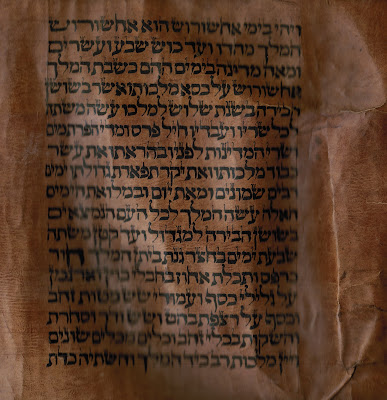Popular posts from this blog
Klaff Tanning question:
By
Rabbi Eli Gutnick
-
I received this question via email. I am not really a klaf expert, I was wondering if anyone could answer this question: Dear Rabbi Gutnick, I am writing to you because a good friend of mine has put the idea into my head that the klaf in my tefillin were not really tanned and therefore are not kosher. He referred me to Megilla 19a re diftera. From the research that I have done so far, it seems that the klaf that is used today is tanned only with a lime wash. On all of the tanning websites I’ve seen so far, they say that the lime doesn’t accomplish tanning but only the removal of the hair and some other pre-tanning effects. Would you be able to explain to me or refer me to a website that explains how the tanning process that is used today takes the hide out of the category of diftera? Thank you very much.
Rabbi Reuvain Mendlowitz clarifies his position on Ksav Chabad (and my final thoughts)
By
Rabbi Eli Gutnick
-
Last week I posted some thoughts in response to a public lecture given by Rabbi Reuvain Mendlowitz regarding Ksav Chabad (the Alter Rebbe's ksav). I felt he did not represent the issue fairly, and since I had received questions about it from a number of people I felt it made sense to write a general response. After I posted my response on this forum, Rabbi Mendlowitz reached out to me by email and we ended up having a respectful and productive email exchange regarding the relevant issues surrounding Ksav Chabad. His position is a lot clearer to me now, and I think he also took certain things on board that I clarified with him. The purpose of the Stam Forum (at least back in it's heyday before all the whats app groups took over) was to connect sofrim from around the world, to promote achdus and build bridges, as well as to offer support and advice. In that spirit, I felt I should write a follow up post, to clarify some of the issues and misconception...


Hi Eli,
ReplyDeleteThis is not Temani. Rather, it is a beautiful example of a classic Spanish hand written on what appears to be a paper thin gevil.
I am curious of two things:
1) Does the gevil retain the dermis (Or Takhton) or has it all been removed to the point that only the epidermis (Or Elyon) remains?
2) Are there any open parashot?
the gvil is thick, both layers, but has a shiny coating. I don't think there are any open parshiyot. Any idea how old this could be or what it's worth?
ReplyDeleteThis comment has been removed by the author.
ReplyDeleteLooks similar to this Sefer Torah
ReplyDeletehttps://0d92c1d4-a-62cb3a1a-s-sites.googlegroups.com/site/stamold/home/Tora_completa.jpg
Which is 700 years old from Spain.
It could be 600+ years old. One may certainly carbon date it.
ReplyDeleteIf that old, it should be worth $15,000+ US Dollars.
Look at this one from Sotheby's $12,000 - $15,000 and not in as great quality or shape.
http://www.sothebys.com/en/auctions/ecatalogue/2012/judaica-n08922/lot.113.lotnum.html
R' Eli, please watch the video at the end of this website...
ReplyDeleteIt suggests that the Megilla here is about 600 yrs old, because of the stretched Shin, in the first line, and the Nun stretching under a Yud.
http://www.rhodesjewishmuseum.org/history/the-800-year-old-torah
Few Comments:
ReplyDelete1. This is indeed not Teimani.
2. I would doubt if the 800 years old Torah is really that old. from comparing the dated Tikuns (אסופת כתבים מימי הביניים כרך ב' כתב (ספרדי על ידי האוניברסיטה העברית
this Torah doesn't match any style Ktuv from that time.
3. The Megillah on Sotheby's didn't sell, also in the past there were some misdated Sefer Torahs and Megilot at auction houses. I don't think this Megillah is that old or that it is from Spain
4. The 700 years old Torah looks like the real thing.
5. The Gevil Megillah does look like a Spanish style writing but I don't think its that old. I have seen stretched Shins and other letter in Torahs of 200 - 300 years old too. The Gag of the letter Yud in the Megillah is strait and not like the old Spanish style pointing up in a slant. The curves on top of the Lamed resembles the Velish style of much later date.
6. Looks like the tagim were added later including the Kutz Shel Yud.